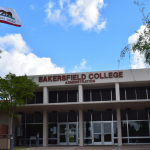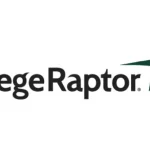A comment we hear often from higher education administrators is: “I want to provide high tech services to my students, but I don’t want to lose the high touch that they have come to expect and we have historically provided.”
This is a very valid and common concern. At Ocelot, we believe that technology is never going to be a “silver bullet” that will solve all communication and engagement challenges. For technology to be successful, it needs to be “part of the larger strategy”, not the “strategy” itself.
Over the past several months, we have sat down with administrators and leaders across higher education to learn more about their thinking on this challenge. Here are some of the themes they have shared with us, and what we have learned:
It’s Getting Harder to Find and Retain Great Staff
We are hearing more and more about the “Great Resignation.” One college leader shared: “There are so many transitions coming out of COVID. They are all hitting you in the face. The amount of transition to support online and now back to both online and in-person, it’s had a big impact on staff.” Another added: “The pandemic forced individuals to rethink where they want to work. We are a face-to-face institution. It is hard to find qualified people who want to work face-to-face.” A third leader shared: “We have had a difficult time retaining people in our call center.”
Brain Drain – and Its Impact on the Institution – is Real
When staff retire or move on, there can be a loss of institutional knowledge. One leader shared: “We have lost so many people who take with them their knowledge base.” Another added: “Our staff is swamped. We struggle with keeping our content current.”
The Amazon “1-Click” – the Pros
We have asked a number of higher education leaders what they think of Amazon’s “1-click” approach. In other words, making student services – registration, course selection, financial aid, etc. – simpler and easier, with fewer steps. The positives that were shared included the following comments:
“I would like to see more AI in our systems. If you are a student (current or prospective) and you are looking for particular courses or subjects, it would be great for our systems to provide recommendations and encourage them to see an advisor at the right time.”
“Students are savvy. We need to use technology to provide more time for meaningful conversations. 24/7 information, 365 days a year is a powerful immediate benefit. We are trying to get to the point where the high touch efforts are focused when and where they will make the biggest difference.”
The Amazon “1-Click” – the Cons
There is recognition that technology can bring efficiency, but what about students who do not have access to technology? And what about students who may need to speak to someone directly? One administrator shared that first generation students “may visit campus and need to speak to someone to get some assistance.” Another leader added: “The team and I implemented a policy – all students must attend a mandatory advising session. Staff argued that they need to have a conversation with an adviser before enrolling. We hope this will lead to students being more successful in the long-run.”
It’s Not Just About Communicating with Students
Several leaders shared that there is an opportunity to raise the bar with communications to faculty and staff. One leader shared: “We often create policies and handbooks, but people put the documentation on the shelf and forget about it. It would be great if we could make the information more readily accessible and more visible.”
Importance of a “Sustainable Strategy”
With the proliferation of so many technologies in higher education over the past several years, it was noted that it can be hard to keep track of them all, and there is a missed opportunity for them to integrate well with each other. One leader noted the importance of having a sustainable strategy that does not overwhelm staff or break the budget.
The Wrap
We are hearing that technology can be a great way to reach students, but that it has to: 1) be part of a larger holistic strategy that ensures that students are provided timely and helpful advice, 2) drive clear ROI, either through additional revenue or through efficiencies such as reduced call center costs, 3) support the maintenance of knowledge and content in a way that does not get disrupted when there is staff turnover, 4) remove the friction from key processes that may hinder access and retention, and 5) enable staff to have more meaningful interactions with students. Ultimately, school leaders believe that it’s the “balanced combination” of high tech and high touch that can lead to the greatest student (and institutional) success.















